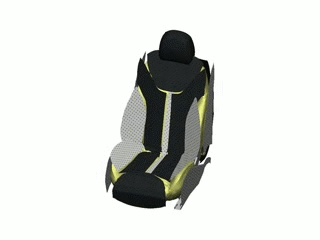
With ESI Virtual Seat Solution (VSS), you can predict seat trim manufacturing and assembly at different stages of the seat development process:
- Quick trim manufacturing prediction tool: provides seat engineers with a quick estimation of the stresses and strains in seat cover and foams for an accurate prediction of seat performance early in the development process, based on a limited amount of data.
- Detailed sewing and assembly process enables seat engineers to perform the complete manufacturing and assembly of the seat trim parts, taking into account the assembly sequences as well as the spring and attachment tools. Manufacturing issues can be anticipated and information can be shared with the production department.
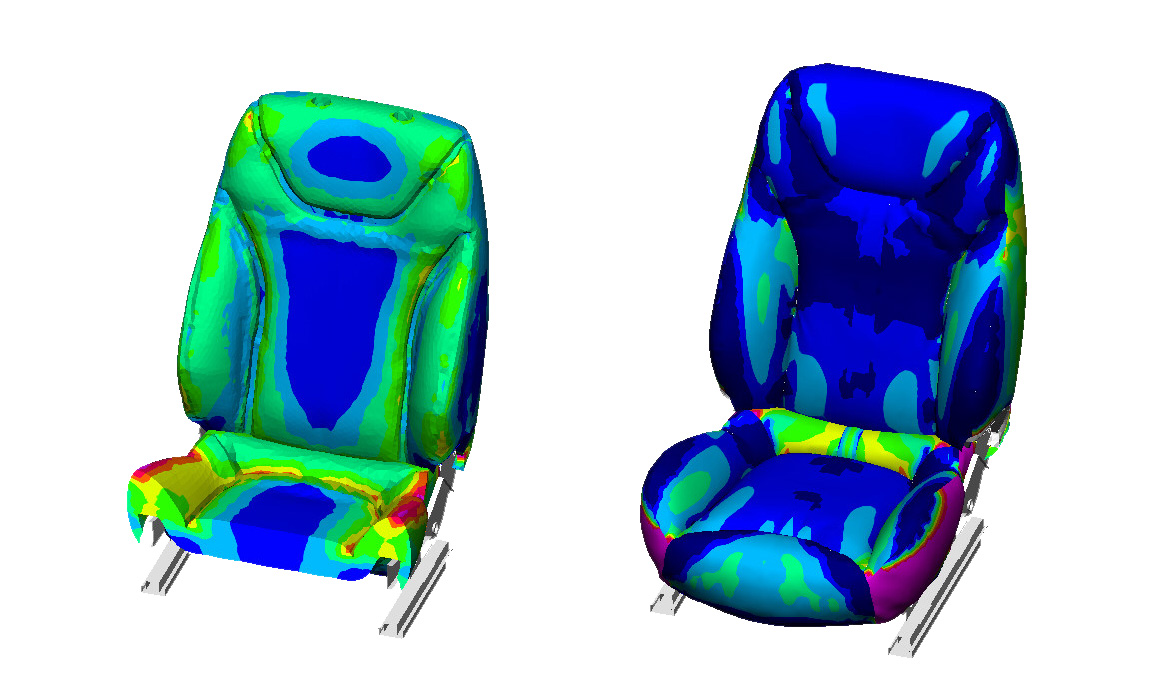
Anticipate manufacturing issues
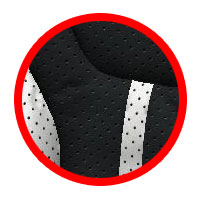
Detailed prediction of sewing and assembly attachment taking into account the real physics and deformation of materials enables the detection of quality issues such as cover wrinkles or bridging gaps before going to production. Adapted seat design iteration tools can then be used to test several variants, to modify the trim patterns, the sewing lines and the materials.
Provide information to your production department
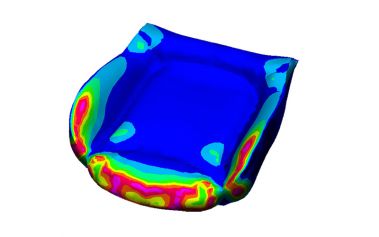
Starting from the seat trim outline and taking into account the real physics and deformation of materials, VSS predicts trim patterns as well as foam overbuilt. You can then use this information for quoting, nesting, production, or to predict the seat trim assembly.
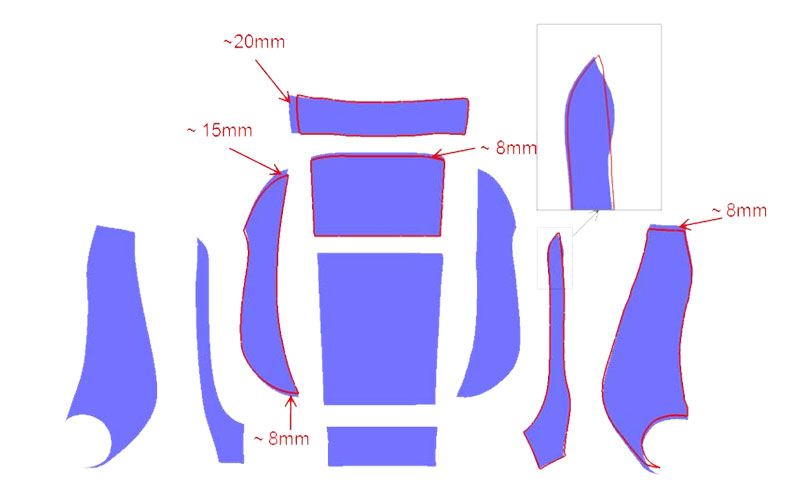
The sewing and wrapping processes of a FORD seat under development have been simulated. Some craftsmanship issues - wrinkles of the cover and a bridging gap - have been predicted and confirmed by the physical prototype.
Reference: FORD Publication "Visual Seat Prototyping Application for Craftsmanship, Comfort and Safety", NAFEMS 2011